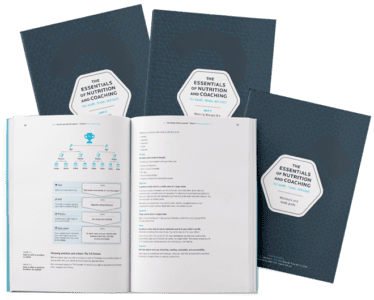Chapter 2
Intermittent fasting: The basics
What exactly does “intermittent fasting” mean? And why are so many people doing it? Let’s start with the fundamentals, including the key must-know terms, a quick look at the most popular intermittent fasting schedules, and some surprising truths about intermittent fasting you won’t hear elsewhere.
Key concepts
- Intermittent fasting means sometimes you eat, and sometimes you don’t. But exactly when and how much you eat (or don’t eat) varies from one fasting schedule to another.
- We define intermittent fasting more broadly than some people. In this ebook, we’ve included intermittent energy restriction (such as the 5:2 diet), time restricted feeding (such as the 16:8 and 20:4 diets), and fasting mimicking diets under the intermittent fasting umbrella.
- Intermittent fasting offers many benefits. But it doesn’t benefit everyone equally.
What is intermittent fasting?
In some ways, the concept of intermittent fasting (IF) is so simple it seems silly to read a multi-chapter ebook to the topic.
“Fasting” is just a fancy word for “not eating.”
“Intermittent” means “sometimes,” “occasionally,” or “now and again.”
When you combine the two into a phrase, you’re basically saying:
Sometimes you fast. Other times you eat.
Except, of course, IF is a bit more complex than that.
When should you eat? And how much? And how long should you fast? How do you stay consistent?
We’ll get to those questions a bit later in the ebook. For now, we’d like to offer a little background:
Let’s start with some definitions.
Your vocabulary cheat sheet
Here’s a quick reference for some of the terms we use in this book.
- IF: Intermittent fasting: Occasionally eating nothing
- IER: Intermittent energy restriction: Eating a lot less (but not zero) on some days, and normally on other days
- FMD: Fasting mimicking diets: Eating roughly half as much as usual one week of the month
- ADF: Alternate day fasting: Alternating days of eating with fasting or eating much less
- TRF: Time restricted feeding: Eating only within a pre-specified period of time, or an “eating window”
- CR: Caloric restriction: Consuming less energy (calories) than you expend
Intermittent fasting, defined
Intermittent fasting (IF) is the name some nutrition experts give to the practice of occasionally going for extended periods either eating nothing, or a lot less than usual.
And there are four main ways to do it.
- Classic IF: Occasionally, you eat nothing. For example, on an Alternate Day Fast, you’d fast every other day. Other IF schedules recommend fasting just one or two days a week—or a few (or more days) a month.
- Intermittent energy restriction: Also called “partial fasting,” you consume less, but not zero. For example, on the 5:2 plan, you’d eat normally five days a week and restrict calories two days a week.
- Time-restricted feeding: You confine your eating to a pre-specified period of time, or an “eating window.” For example, on the 16:8 plan, you consume food 8 hours a day, fasting for the other 16. On the 20:4 plan, you only eat during 4 hours of the day. Good old fashioned meal skipping also falls into this style of fasting.
- Fasting mimicking diets: For an entire week, you eat roughly half as much as usual. Then for 3-4 weeks, you eat normally, continually repeating the cycle.
Technically, “fasting” is defined as going without food for at least 8 hours. Some of the fasting methods above include 8 hours fasts (or longer)—and some don’t.
That said, in this ebook, we’ve included all of those options under the IF umbrella.
For simplicity, unless specifically stated, we’ll use the term IF to encompass all of these eating styles.
Intermittent fasting: A brief history
Sometimes intentionally and other times not, humans have gone without food since the beginning of our time on this planet.
Throughout the world, many tribes have experienced some form of IF, even to this day. They eat a lot when food is plentiful, and much less or nothing at all when food is scarce. Even in industrialized countries, many people still go hungry for economic reasons.
Aside from times of scarcity, humans have also fasted on purpose:
- Ancient Greeks like Plato and Pythagorus sometimes went without food because they believed it boosted health and mental performance.1
- Muslims fast from dawn to sunset during Ramadan. Jews do it on Yom Kippur to atone for their sins. Christians, too, have been known to do a partial fast during the 40 days of Lent by going without a range of foods.
- Gandhi went on hunger strikes 17 different times to protest discrimination by the British government.
It wasn’t until the 1900s, though, that researchers started experimenting with what, how much, and how often they fed their lab mice and rats. Some lucky rodents served as the controls, and had access to food 24-7. Others were much less fortunate. Researchers put them on a strict diet—the kind of diet that most humans would struggle to maintain.
The result: the somewhat starved rodents lived longer.2
Over the years, in the name of science, lab rats and mice have eaten just once a day, every other day, or only during certain times of day. These periodic fasts make the rodents healthier: protecting their brains, preventing cancer, and slowing the aging process.3
To help humans reap the same benefits, medical professionals began experimenting with a wide range of fasting techniques to promote health, longevity, and weight loss. Those approaches were pretty stinking brutal.
Eventually, the scientific community figured out that most humans can’t stick with a diet that recommends they stop eating for weeks on end.
So they came up with gentler, more sustainable approaches, such as fasting one or two days a week.
Recent research shows that, when done properly, IF might help:
- Regulate blood glucose 4
- Control blood lipids such as cholesterol 5
- Reduce the risk of heart disease, cancer, and other diseases6,7
- Manage body weight 8
(You’ll learn more about those benefits in chapters 4 and 5.)
3 truths you don’t usually hear about intermittent fasting
IF offers a lot of benefits—but there are some gray areas. Based on our personal experimentation with many IF schedules, the experiences of our clients, and the latest research, we know:
A little fasting goes a long way.
We’ve found that IF isn’t necessarily faster or better than conventional calorie restriction. More surprising, we’ve found that a little fasting (one day a week) may offer more benefits than a lot of fasting (two or more days a week).
In fact, when John Berardi, PhD (Precision Nutrition’s co-founder), and Krista Scott-Dixon, PhD (our director of curriculum), pushed too far with fasting, they got less healthy.
You don’t have to follow a carefully structured plan.
Precise timing, amounts, schedules… these don’t matter as much as “getting it in the ballpark,” or following the basic concepts that make fasting and other practices work.
This is especially true if you’re at a lower nutritional level (which is most people).
There’s no single best method.
People’s experiences with IF can vary widely, because of:
- physiological differences like age, sex, or health
- psychological differences such as how willing people are to be uncomfortable right now in order to benefit in the future
- environmental differences like social support, or living in a food-focused culture
Don’t get sucked in and start doing IF randomly or wildly, hoping for Cinderella-style life transformation.
Instead, test claims, look at the research, understand the basic mechanisms, and adopt a careful, evidence-based approach.
Keep reading and we’ll show you how.
References
Click here to view the information sources referenced in this article.




